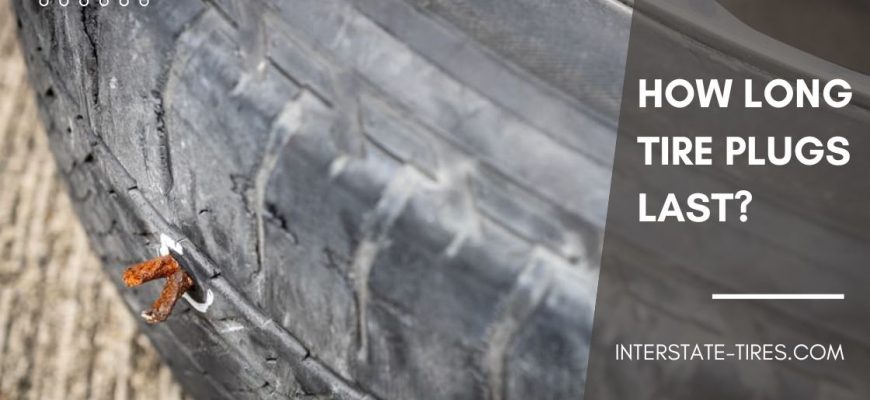A tire plug, a quick and often inexpensive fix for small punctures, offers a temporary solution to a flat tire. But how long can you rely on it? The lifespan of a tire plug isn’t fixed; it depends on several crucial factors, making a definitive answer impossible. Let’s delve into the variables affecting its longevity and the safety implications.
Factors Affecting Tire Plug Lifespan
- Size and Location of the Puncture: Smaller punctures in the tire’s tread area generally hold plugs better than larger holes or those near the sidewall. Sidewall punctures are rarely repairable with a plug and often require a patch or tire replacement.
- Type of Plug: Different plugs are available, from basic rubber plugs to more sophisticated mushroom-shaped ones. Higher-quality plugs, often professional-grade, typically last longer.
- Installation Technique: Proper installation is paramount. An improperly installed plug can easily fail, leading to a tire leak. Professional installation ensures a secure and long-lasting repair.
- Driving Conditions: Aggressive driving, frequent high-speed driving, and driving on rough roads can significantly shorten a plug’s lifespan. Consistent exposure to extreme temperatures (very hot or very cold) can also affect its durability.
- Tire Pressure: Maintaining the correct tire pressure is essential. Underinflation puts extra stress on the plug and tire, increasing the likelihood of failure. Overinflation can also damage the plug and surrounding tire material.
- Tire Condition: A tire that’s already worn or damaged is more prone to further issues, reducing the lifespan of a plug.
Mileage Expectations and Safety Concerns
While some sources suggest a tire plug can last for thousands of miles, it’s prudent to consider it a temporary fix. There’s no guaranteed mileage. Regularly inspect the plugged area for any signs of leakage or bulging. Even a seemingly secure plug can fail unexpectedly.
Signs of Plug Failure:
- Slow air leak resulting in needing frequent inflation.
- Visible bulging or damage around the plug area.
- Sudden air loss.
Safety is paramount. If you experience any of the above signs, replace the tire immediately. Driving on a compromised tire is incredibly dangerous and can lead to accidents. Never rely on a tire plug for extended periods, especially for long distances or high-speed driving.
When to Replace a Tire
While a tire plug can be a convenient solution for minor punctures, it’s crucial to remember its limitations. Consider replacing the tire entirely if:
- The puncture is in the sidewall;
- The puncture is larger than recommended for plugging.
- The plug repeatedly fails or shows signs of damage.
- The tire is already significantly worn.
- You feel any hesitation about the safety of the repair.
Ultimately, prioritizing safety is key. Regular tire inspections and prompt attention to any issues will help ensure a safe and enjoyable driving experience.
Tire Plugs vs. Patches: Understanding the Difference
While often used interchangeably, tire plugs and patches serve different purposes and offer varying levels of repair. A plug is inserted from the inside of the tire, sealing the hole from the interior. A patch, on the other hand, covers the exterior of the puncture, providing additional reinforcement. For optimal repair, professionals often use a combination of both – a plug from the inside and a patch on the outside, creating a more robust and long-lasting repair.
Professional vs. DIY Tire Plugging
While DIY tire plug kits are readily available, professional installation is highly recommended, especially for inexperienced individuals. Professionals possess the proper tools and expertise to ensure correct plug placement and depth, maximizing the repair’s effectiveness and longevity. Improper installation can lead to premature plug failure and potential tire damage.
Cost Comparison: Plugs vs. Replacement
A tire plug is significantly cheaper than a tire replacement, making it an attractive option for minor punctures. However, the cost savings should be weighed against the potential risks associated with a compromised tire. If the plug fails, the cost of a replacement tire, plus any potential damage to the wheel or vehicle from a blowout, can far exceed the initial cost of professional repair or replacement.
Maintaining Tire Health
Regular tire maintenance is crucial for extending their lifespan and preventing punctures. This includes checking tire pressure regularly, rotating tires according to the manufacturer’s recommendations, and visually inspecting tires for any signs of damage, wear, or embedded objects. Proper tire inflation is particularly important as underinflation increases the risk of punctures and can compromise the integrity of a tire plug;
A tire plug offers a temporary, cost-effective solution for minor punctures. However, it’s vital to remember its limitations and prioritize safety. Regular inspection, awareness of warning signs, and prompt action are crucial. When in doubt, consult a tire professional for a proper assessment and repair or replacement. Remember, your safety and the safety of others depend on well-maintained tires.










I found this article to be extremely helpful and reassuring. It clearly outlines the limitations of tire plugs and emphasizes the need for regular monitoring. A must-read for every driver.
A well-written and informative piece. The inclusion of signs of plug failure is a key element often overlooked in similar articles. Thanks for sharing this valuable information.
A very informative and practical guide. I appreciate the clear explanation of the variables affecting a tire plug’s longevity. Highly recommended for anyone who has experienced a flat tire.
Clear, concise, and easy to understand. The article effectively communicates the complexities of tire plug lifespan in a way that
This is a great resource for drivers. The information on different plug types and installation techniques is very helpful. I learned a lot!
Excellent article! The section on safety concerns is particularly valuable. It highlights the importance of treating a tire plug as a temporary solution and not a permanent repair.
This article provides a comprehensive overview of tire plug lifespan and the factors influencing it. The emphasis on proper installation and the importance of regular inspection is crucial for safety.